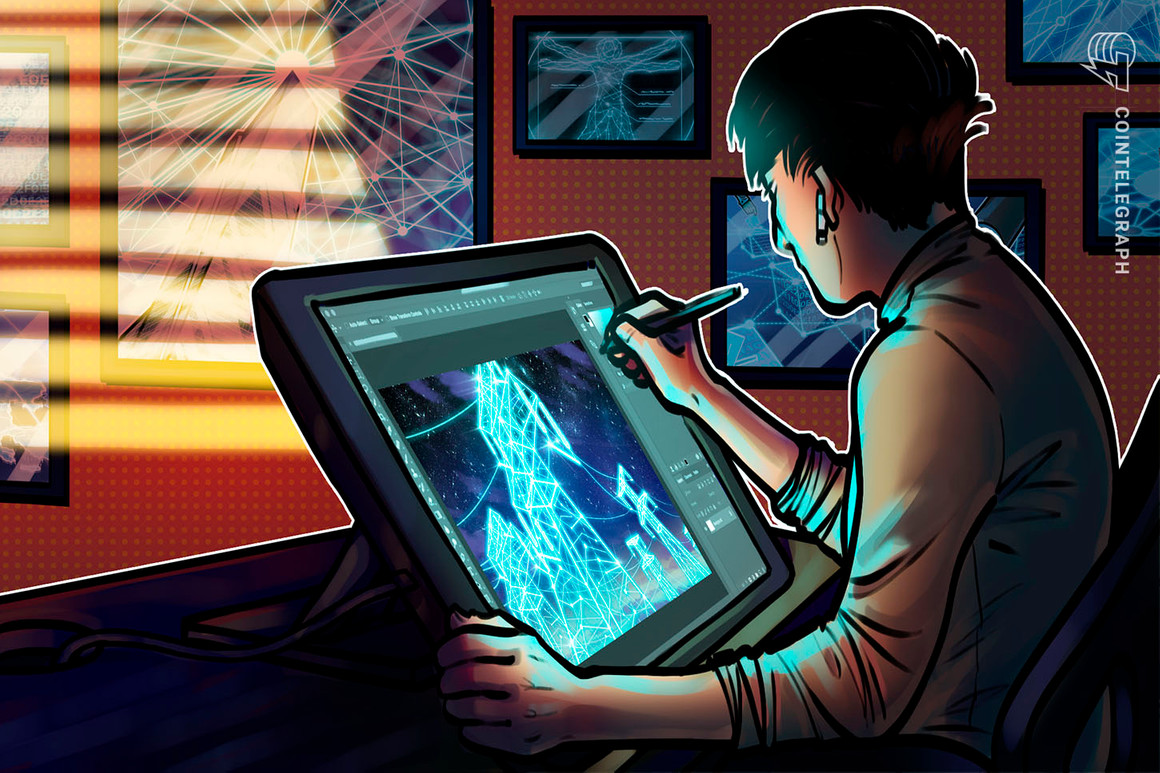With crypto in a state of turbulent flux, a demographic of nonfungible token (NFT) detractors in the fine art world might feel trigger-happy to, at la
With crypto in a state of turbulent flux, a demographic of nonfungible token (NFT) detractors in the fine art world might feel trigger-happy to, at last, declare the industry down for the count.
Meanwhile, artist, critic, dealer, educator and outspoken NFT proponent Kenny Schachter is celebrating the conclusion of Slow Food — his first New York City art exhibition in 25 years — at The NFT Gallery on Manhattan’s Lower East Side, fresh off the heels of headlining NFT Art Day ZRH in Zurich, Switzerland, coinciding with the iconic annual Art Basel art fair, less than 50 miles away.
In June 2022, Schachter had just presented the first-ever NFT booth wall at Art Basel with Galerie Nagle Draxler, expanding the acceptance of NFTs just before profile pictures became the face of their demise. Soon after, Schachter was spotted among the art world elite in Hydra, Greece, celebrating zeitgeist sculptor Jeff Koon’s first token drop with Pace Gallery.
Schachter told Cointelegraph that while his commitment to the intersection of blockchain and art hasn’t faltered since then, “it’s hardened.” The contentious art-world rabble rouser hails from a working-class Long Island, New York family. He studied philosophy, then law — worked in fashion and on the stock market floor — all before stepping foot in his first art gallery in his late 20s or making his name as an art market reporter. Schachter became an artist before the millennium turned, exhibiting his first computer animation in 1993 and producing digital prints as the decade ensued.
“As far as I’m concerned, I’m involved in art,” Schachter said. “That’s all I care about, more than pretty much everything, except for perhaps my kids.” Rather than encapsulating Schachter’s full oeuvre, Slow Food, which closed on June 17, focused on the artist’s most recent blockchain forays: a collaborative, evolving rumination titled Open Book, his new blockchain-based game Pop Principle, and a sculpture about the insidious trend of dinosaur bones being sold through art auction houses. An NFT accompanied each artwork — underpinning them all.
Riding out the booms and busts
When Schachter caught wind of NFTs in 2020, he brushed them off as another form of money before recognizing solutions for difficulties dogging his practice — wrapped in a blockchain bow.
Of course, digital art had long languished in the absence of a practical means to sell and trade it. A number of galleries offering digital artworks in their booths at Art Basel as of 2022 still handed the pieces off after purchase as a file on a flash drive, authenticated based on file size.
Even before NFTs, digital art had been pigeonholed in the manner of other mediums, like performance. Although NFTs gained fame only once artists started making big money, Schachter saw a greater chance to expand his audience beyond the narrow-minded art world.
Several standalone artworks complemented Schachter’s larger projects across Slow Food, like “NFT Gimmicks,” a two-part piece including a fine art print that immortalized a snide tweet Schacter made in reply to Dot Pigeon’s April announcement that the artist was quitting NFTs due to rampant speculation — alongside the actual balaclava Schachter is seen wearing in the post.

“First of all, he’s made millions, probably, off his NFTs,” Schachter told Cointelegraph of Pigeon’s headline-making move. “If I sell an NFT, whether it was $5 or $25,000, that’s a social contract between me and the collector. I have an obligation to support what I’ve done.” He noted that Crypto Mutts, a profile picture collection Schachter founded to mock Bored Ape Yacht Club, will likely end up in his will, to ensure the project survives after he’s not around to maintain it.
Money is nice, but Schachter swears up and down it’s not driving him — he recently opted to forego royalties from resales. Instead, the artist emphasized that his faith relies on the community that NFTs build around his practice and the connections the space lends itself to.
Recent: The Hinman docs: Implications for XRP, SEC credibility and more
The artist had to learn fast about blockchain in his efforts to get involved. He initiated a virtual mentorship with an avid NFT collector and Google executive based in Singapore. “Every two or three weeks, I would sit there like a child with a pen and a paper,” Schacter recalled of their sessions. “I ended up making an artist out of him, putting him in an NFT show I curated at Nagle Draxler in Cologne in 2021.”
Similarly, Schachter’s more far-reaching projects across “Slow Food” require people to make them function. Open Book began last summer while he was co-authoring The NFT Book. Inspired by the social media responses he got for input while helping pen the book, Schachter curated 20 disparate artists to contribute stances on NFTs — some positive, some…
cointelegraph.com
